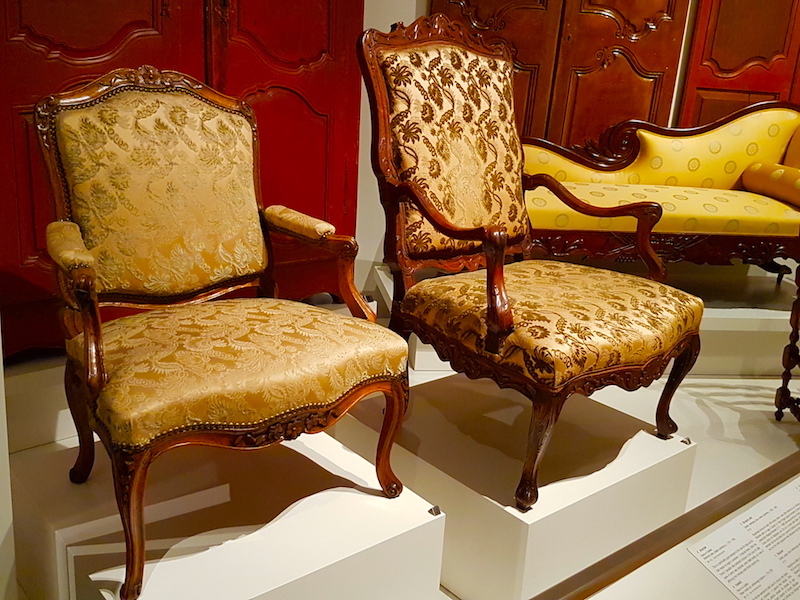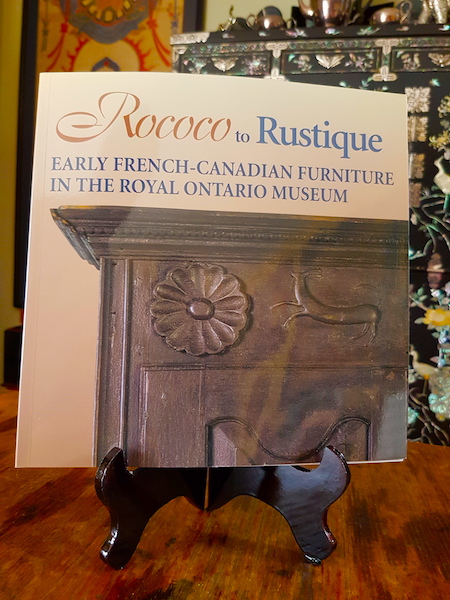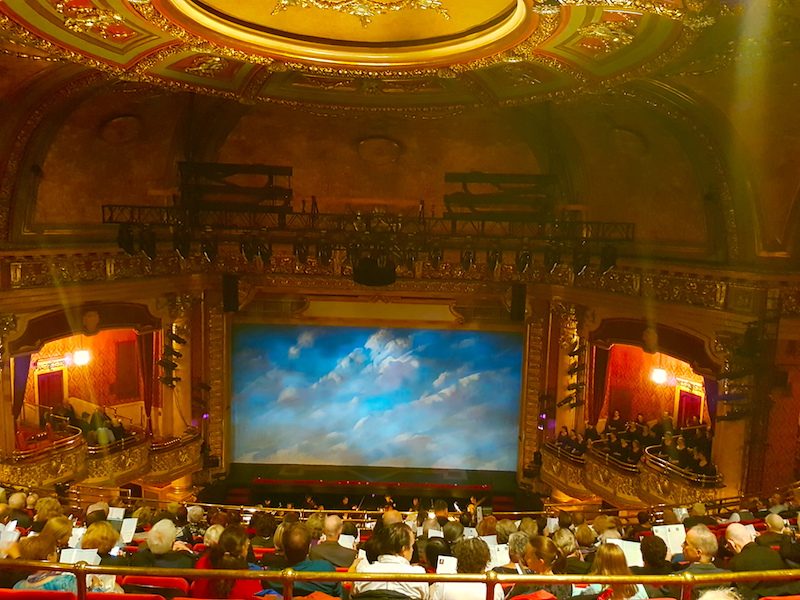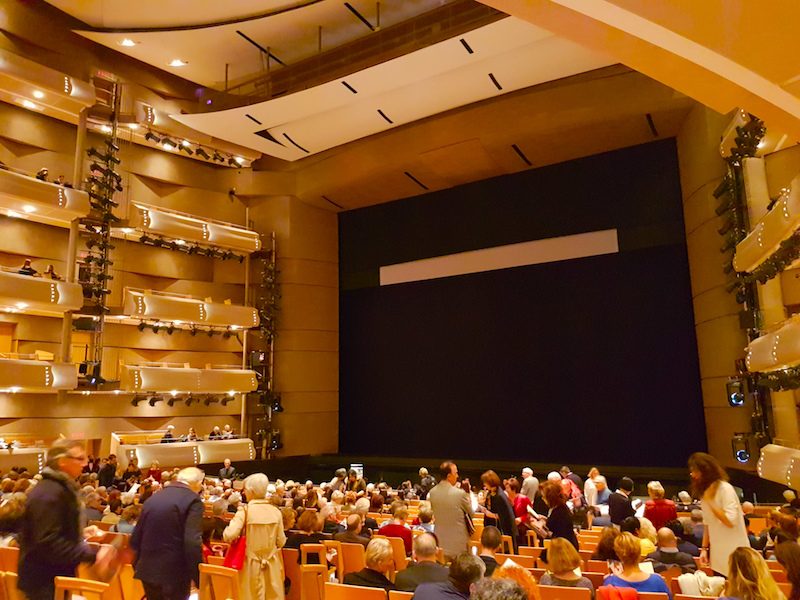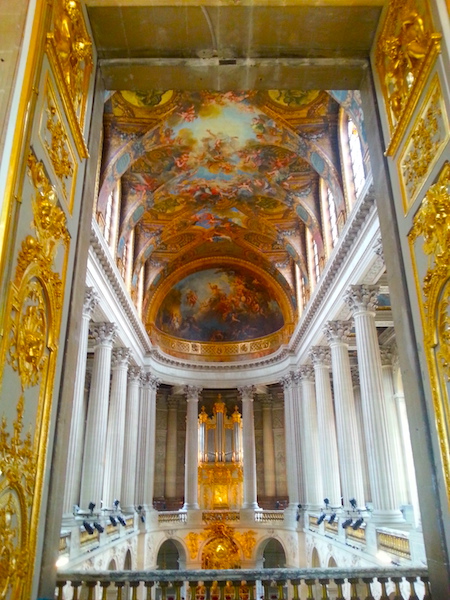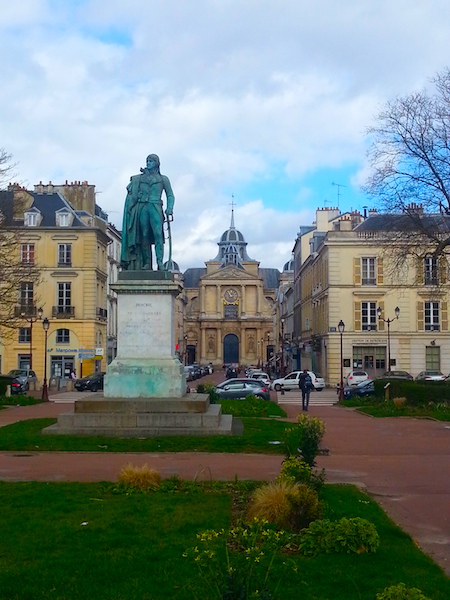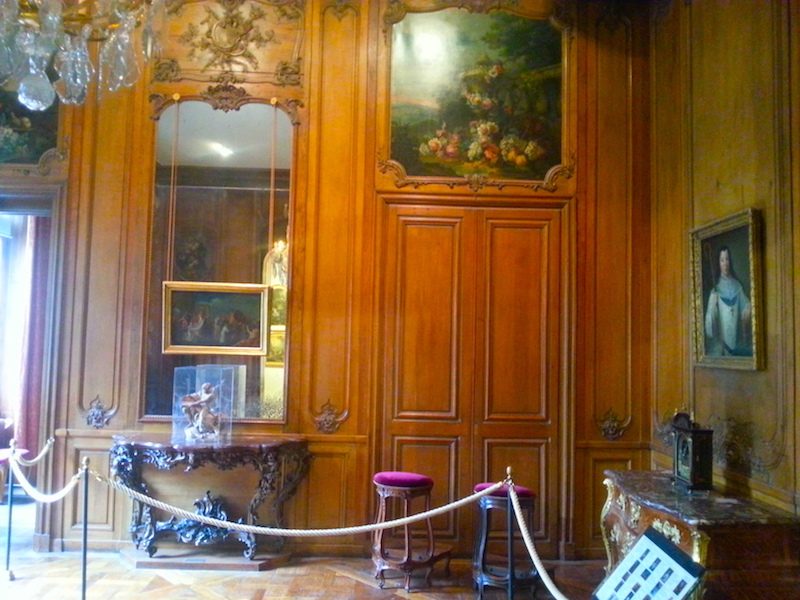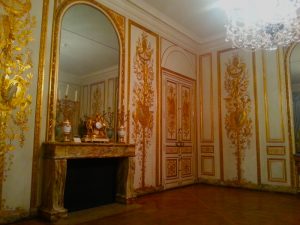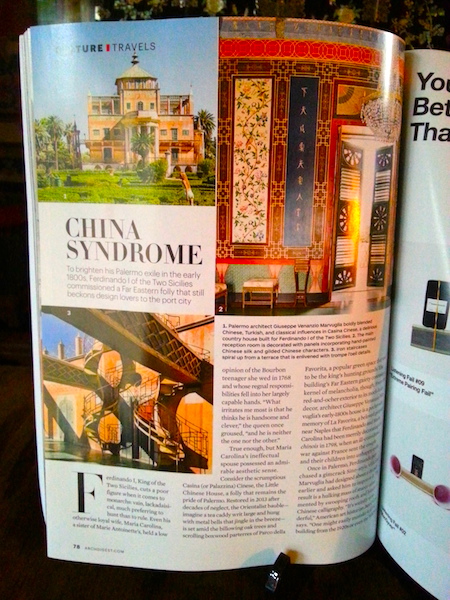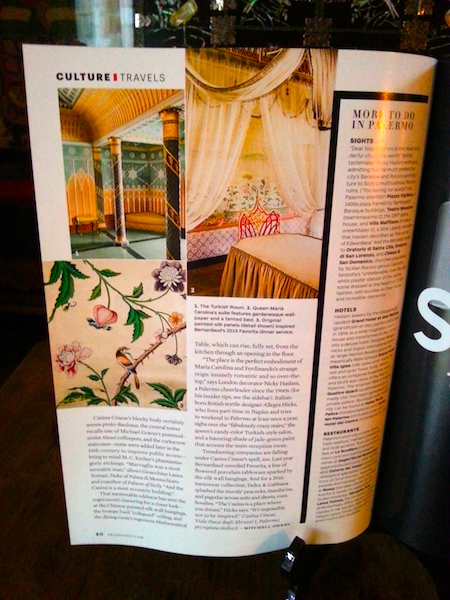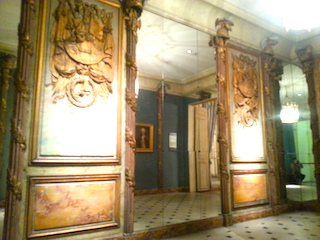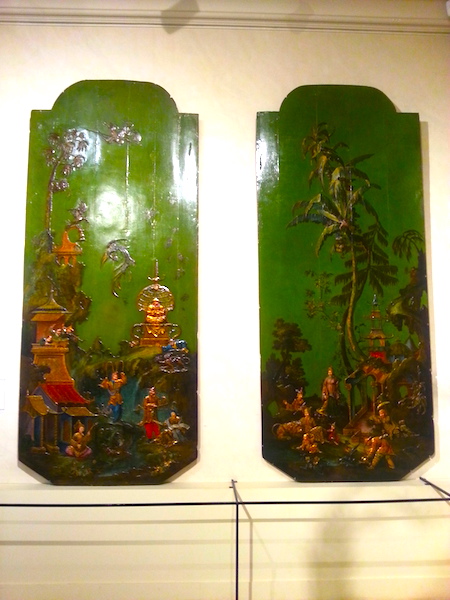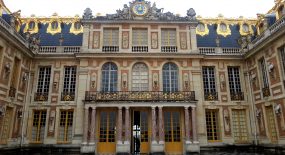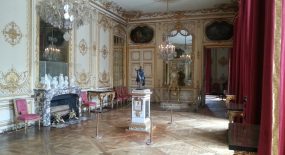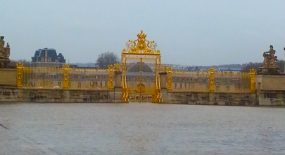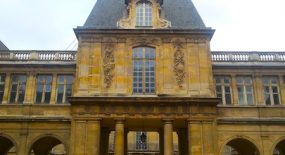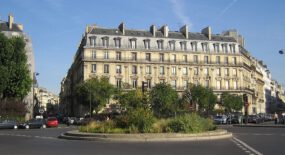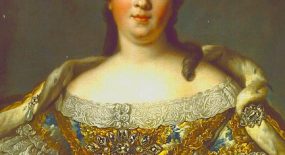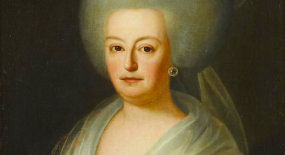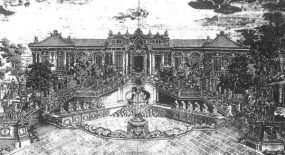One of the handsomest pieces of 18th-century furniture in the New France collection at the Royal Ontario Museum (ROM) is this butternut and pine commode from the Montréal area, dated 1740-1760. As mentioned in the two previous posts, Louis XV styles in New France only took hold around 1740 and persisted for decades after the British conquest in 1759.
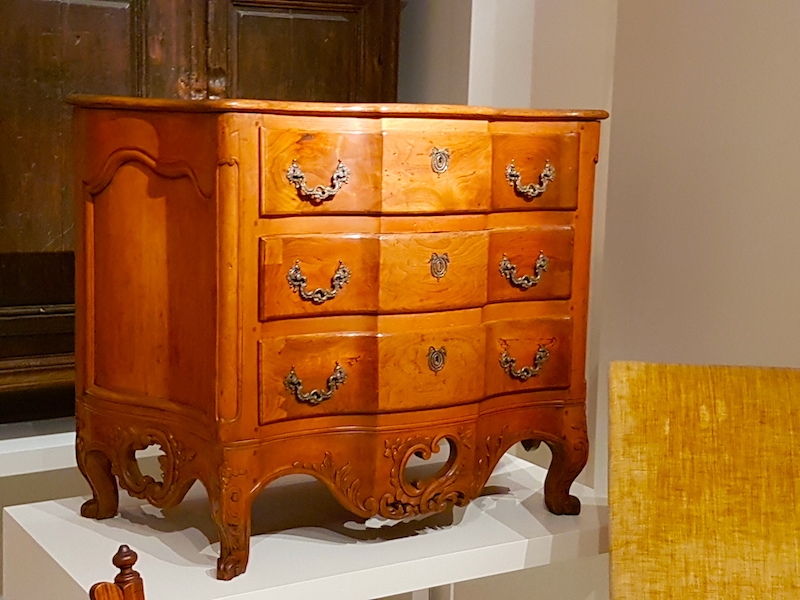
A commode from New France/Québec in the ROM.
Although obviously provincial in style when compared to the work of the great ébénistes active in Paris at the same time, it’s a very fine piece. As with provincial furniture in France itself, the furniture in New France was simpler in design and execution and used humber materials than that of the capital and the court. In this case, the fancy floral moulding at the bottom, the sophisticated serpentine front, and the elaborate hardware indicate that it was a high-end piece for its time and place. Very likely it was commissioned by a well-off family.







